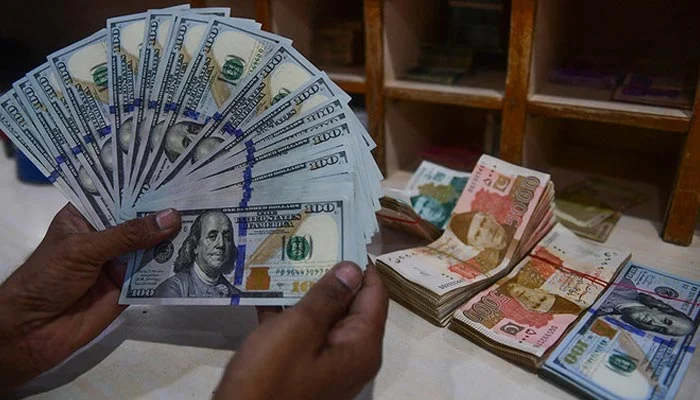KARACHI, Oct 16(ABC): The Pakistani rupee is expected to trade range-bound in the coming week, depending on the demand for greenback by importers as the State Bank of Pakistan (SBP) has started to clear pending letters of credit.
The market will also keep an eye on any assistance from multilateral lenders in the form of finance pledges following the cataclysmic floods in Pakistan.
The local currency broke its winning streak against the dollar and depreciated by 0.21% during the outgoing week in line with the increasing demand for the greenback from importers.
However, the dollar supplies also reduced due to fewer greenback conversions from exporters.
Pakistan’s foreign exchange reserves also kept shrinking. The market was worried about how the country can pay its debt payments and funds its current account deficit given its dwindling reserves. The strengthening of the dollar against other major currencies was the other factor contributing to the rupee’s depreciation.
The rupee traded in the range of 217 to 218 in the interbank market. the rupee closed at 217.97 per dollar on Monday. It ended at 218.43 on Friday.
“We expect that the rupee will trade range-bound in the upcoming days. While inflows appear to be weaker as exporters are not in the desire to sell dollars in the forward market aggressively, the demand for dollars from importers is expected to stay robust now that the import backlog has been cleared,” a currency dealer told the publication.
“The rupee is also experiencing a technical correction,” he added.
Finance Minister Ishaq Dar, who is participating in the International Monetary Fund and World Bank annual meetings, told in an interview that the country will seek rescheduling of some $27 billion worth of non-Paris Club debt largely owed to China.
Dar ruled out the possibility of Pakistan’s default on debt, an extension of the maturity date on bonds due in December or renegotiation of Pakistan’s current International Monetary Fund programme, according to Reuters.
The minister said multilateral development banks and international donors had been “quite flexible” with ways to meet Pakistan’s external financing needs, estimated to be $32 billion, after devastating floods. Some of this may come from reallocating funds from previously approved, slower-disbursing development loans, he added.
The International Monetary Fund (IMF) is waiting to see how it can help Pakistan in terms of granting relief over repayment, after the World Bank and United Nations Development Programme (UNDP) is done evaluating the flood damages faced by the country, said IMF’s Middle East and Central Asia Department Director Jihad Azour at a press briefing in Washington.
Early next month, a team from the IMF will come to Pakistan to begin the next review of their existing programme, he added.
Pakistan is hopeful of receiving $4 billion committed by World Bank, Asian Development Bank and the United Nations for flood relief operations.
The central bank’s foreign exchange reserves declined by $303 million to $7.596 billion as of October 7 due to external debt repayments, which included repayment of a commercial loan and interest payment on Eurobonds.
The reserves held by the central bank are enough to cover barely one month’s worth of imports.

